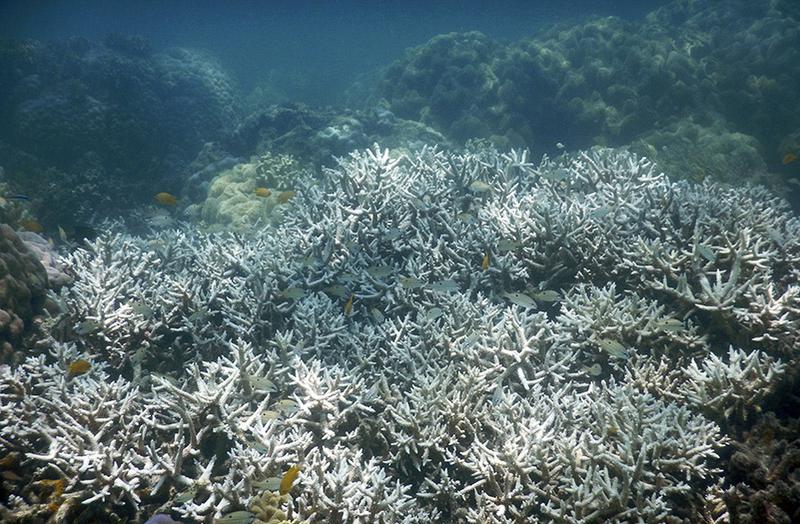About Staghorn coral:
- It is one of the most important corals in the Caribbean.
- It, along with elkhorn coral and star corals built Caribbean coral reefs over the last 5,000 years.
- Staghorn coral can form dense groups called “thickets” in very shallow water.
- These provide important habitat for other reef animals, especially fish.
- Appearance
- Staghorn coral colonies are golden tan or pale brown with white tips and they get their color from the algae that live within their tissue.
- These corals have antler-like branches and typically stem out from a central trunk and angle upward.
- Each staghorn coral colony is made up of many individual polyps that grow together.
- These coral get food from photosynthetic algae that live inside the coral’s cells. They also feed by capturing plankton with their polyps’ tentacles.
- Distribution:
- It is found typically in clear, shallow water (15–60 feet) on coral reefs throughout the Bahamas, Florida, and the Caribbean.
- The northern extent of the range in the Atlantic Ocean is Palm Beach County, Florida, where it is relatively rare.
- They live in many coral reef habitats including spur and groove, bank reef, patch reef, and transitional reef habitats, as well as on limestone ridges, terraces, and hard bottom habitats.
- Lifespan & Reproduction
- These coral reaches reproductive maturity at about 7 inches tall.
- Staghorn coral is a simultaneous hermaphrodite, meaning each colony produces both eggs and sperm, but usually does not self-fertilize.
- This coral sexually reproduces once per year after the full moon in late summer by “broadcast spawning” eggs and sperm into the water column.
- Fertilized eggs develop into larvae that settle on hard surfaces and form new colonies.
- Threats
- Climate change
- Diseases: It is particularly susceptible to white band and white plague diseases.
- Unsustainable Fishing Pressure
What is White band disease?
- It is a common tissue loss disease.
- Studies suggest that white band disease is caused by a communicable agent, however, a specific pathogen has not yet been definitively identified.
Q1) What is Algae?
Algae are a diverse group of photosynthetic organisms that can be found in various aquatic and moist environments, including freshwater and marine ecosystems. They belong to the kingdom Protista or Plantae, depending on the classification system used.
Source: Genomic markers of disease resistance in staghorn corals
Last updated on January, 2026
→ Check out the latest UPSC Syllabus 2026 here.
→ Join Vajiram & Ravi’s Interview Guidance Programme for expert help to crack your final UPSC stage.
→ UPSC Mains Result 2025 is now out.
→ UPSC Notification 2026 is scheduled to be released on January 14, 2026.
→ UPSC Calendar 2026 has been released.
→ UPSC Prelims 2026 will be conducted on 24th May, 2026 & UPSC Mains 2026 will be conducted on 21st August 2026.
→ The UPSC Selection Process is of 3 stages-Prelims, Mains and Interview.
→ Prepare effectively with Vajiram & Ravi’s UPSC Prelims Test Series 2026 featuring full-length mock tests, detailed solutions, and performance analysis.
→ Enroll in Vajiram & Ravi’s UPSC Mains Test Series 2026 for structured answer writing practice, expert evaluation, and exam-oriented feedback.
→ Join Vajiram & Ravi’s Best UPSC Mentorship Program for personalized guidance, strategy planning, and one-to-one support from experienced mentors.
→ UPSC Result 2024 is released with latest UPSC Marksheet 2024. Check Now!
→ UPSC Toppers List 2024 is released now. Shakti Dubey is UPSC AIR 1 2024 Topper.
→ Also check Best UPSC Coaching in India

















